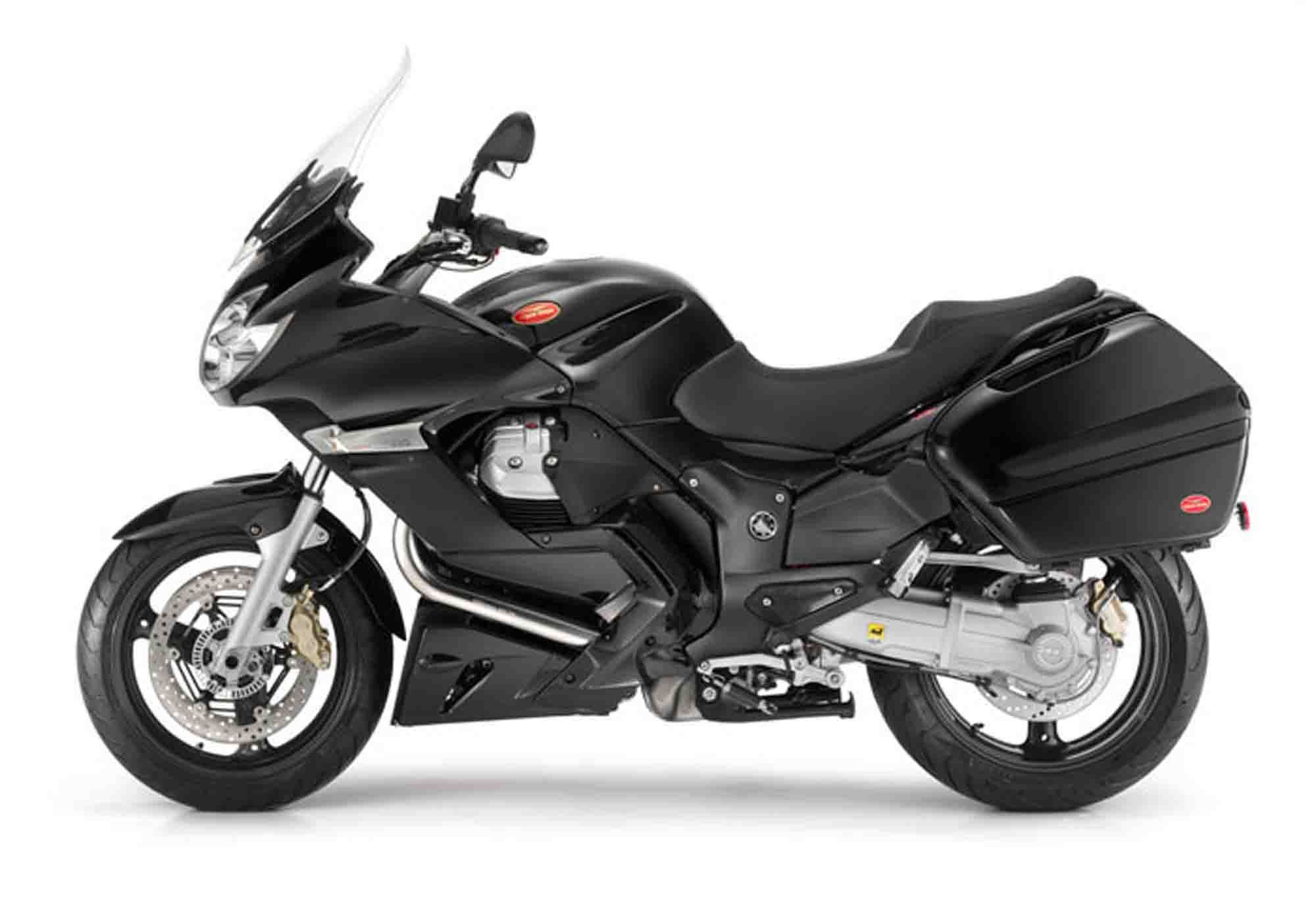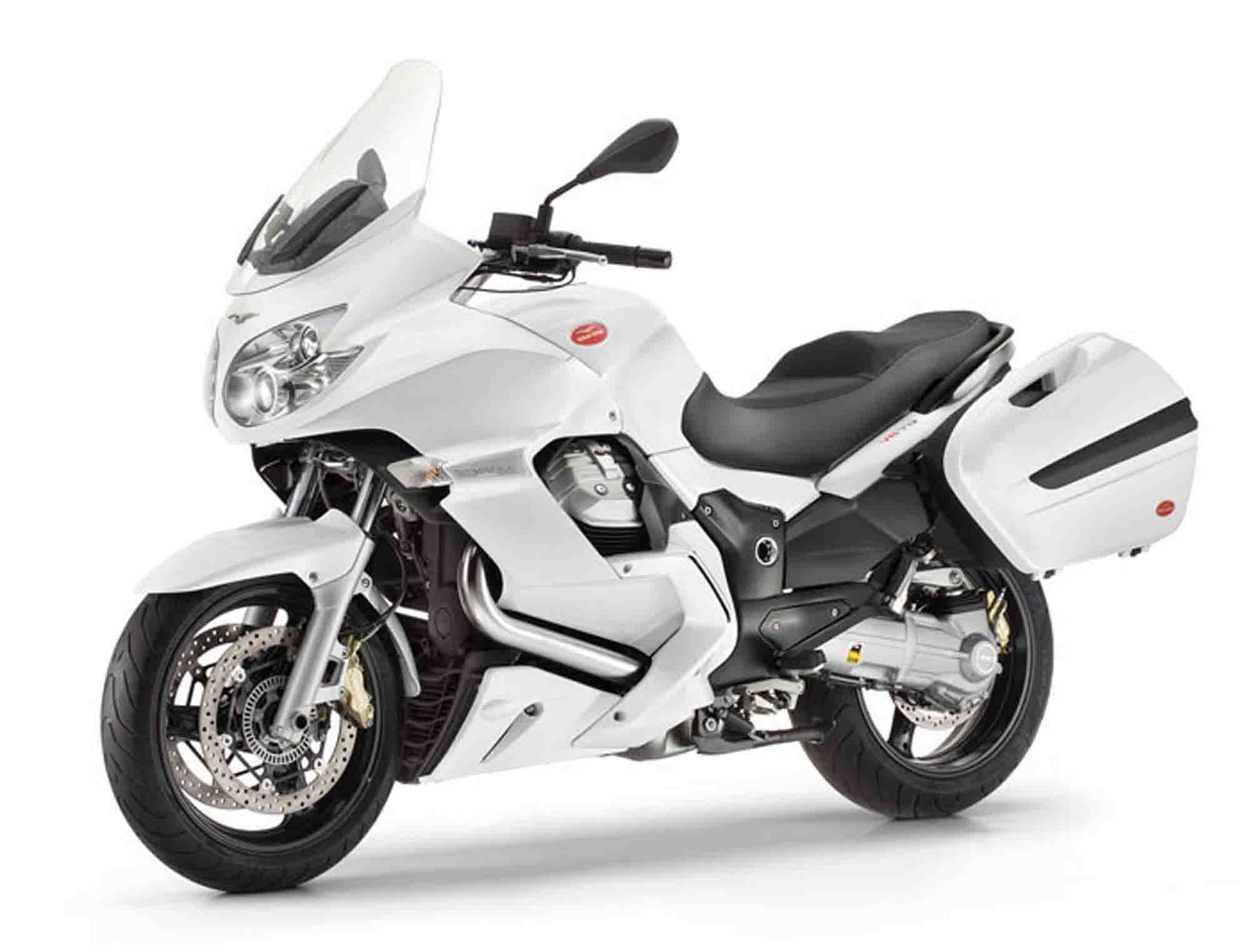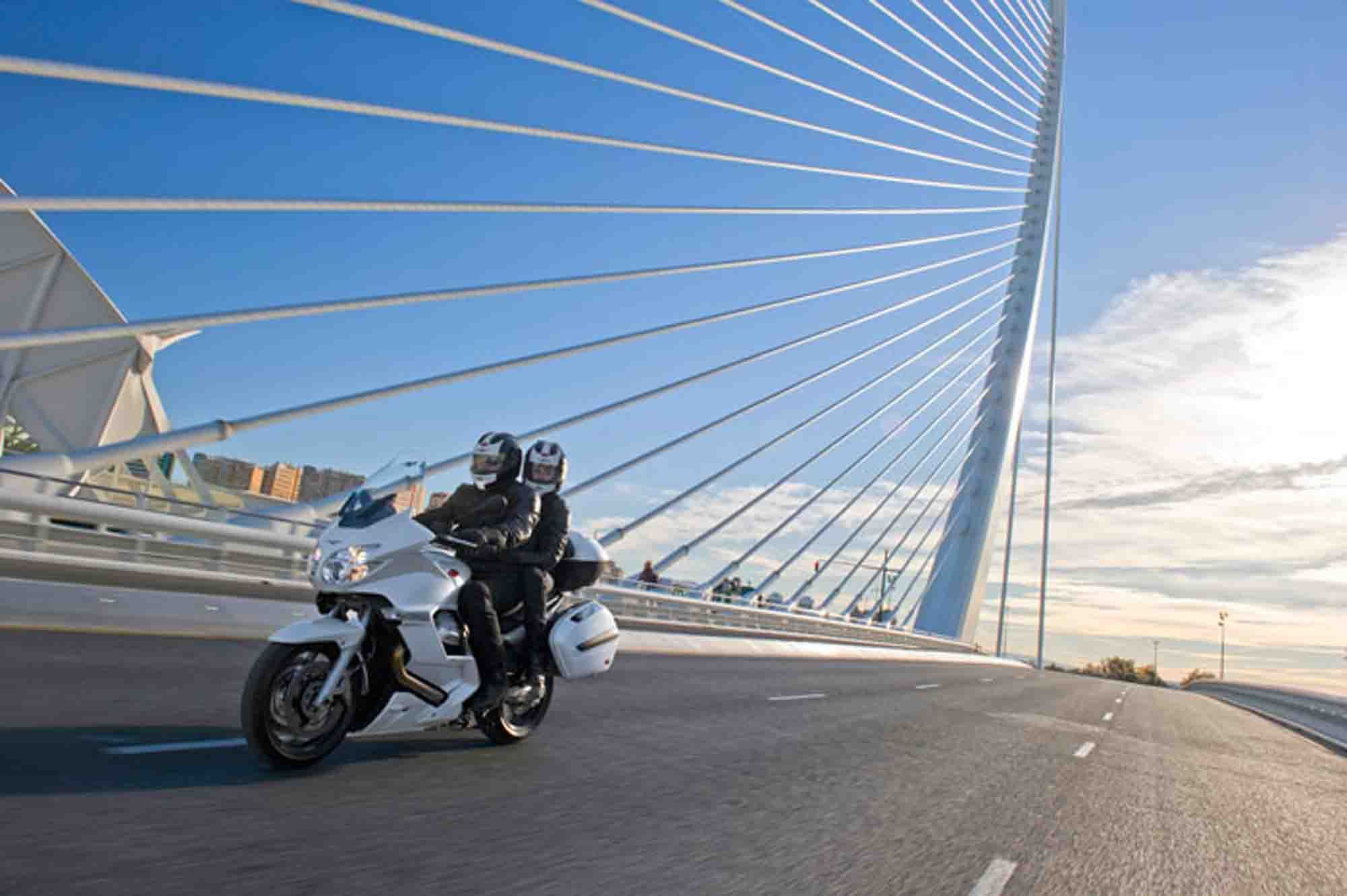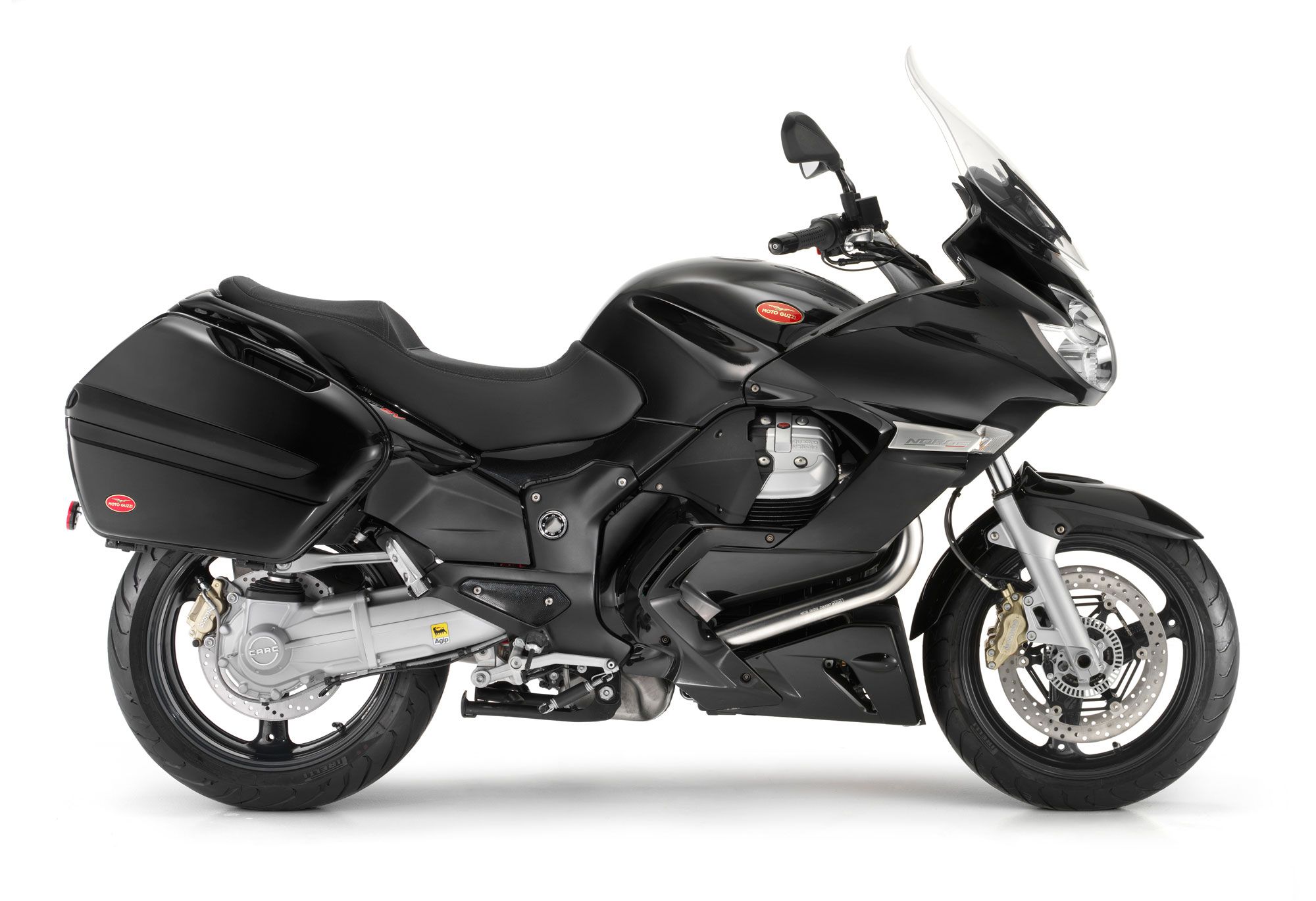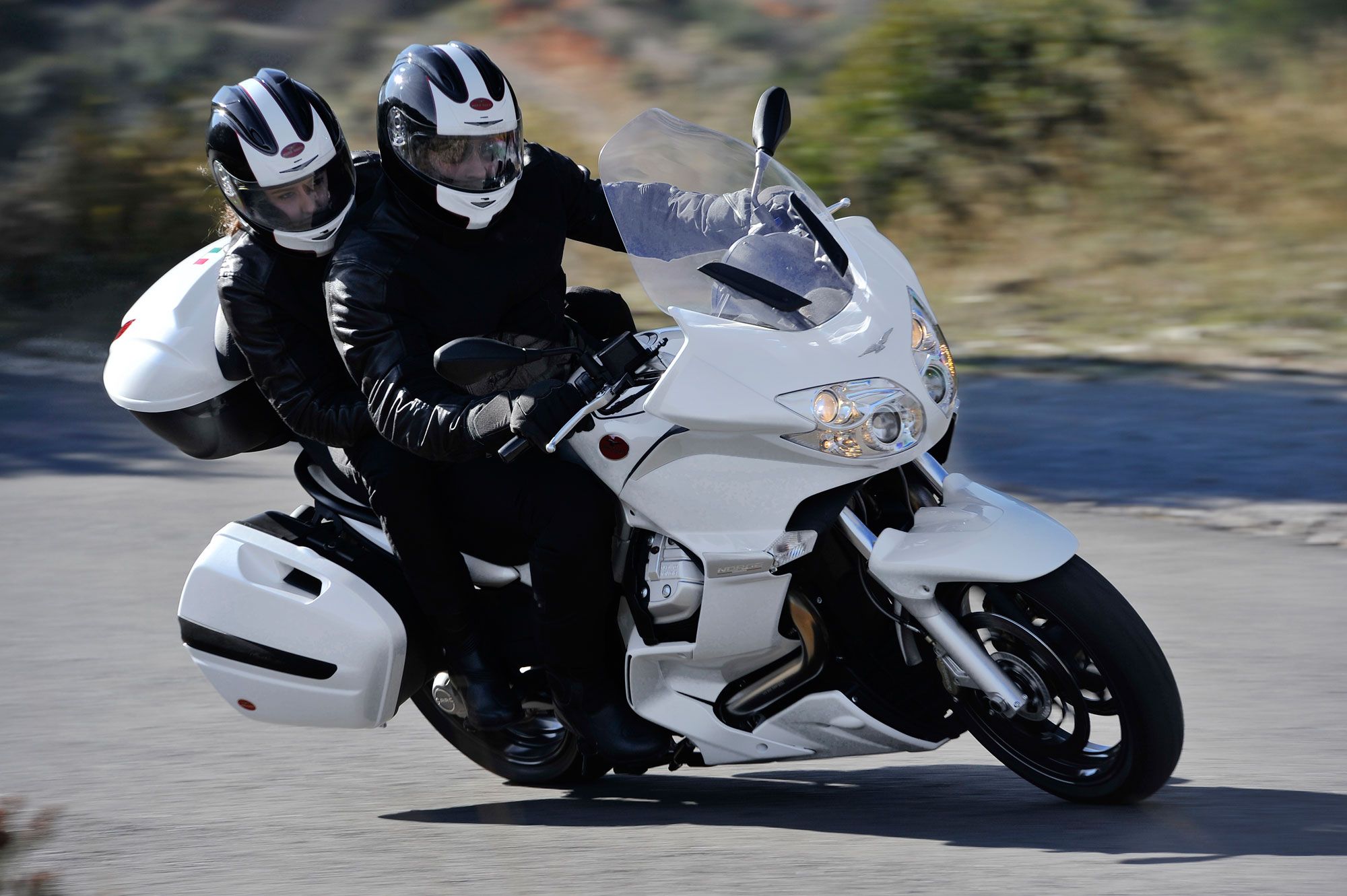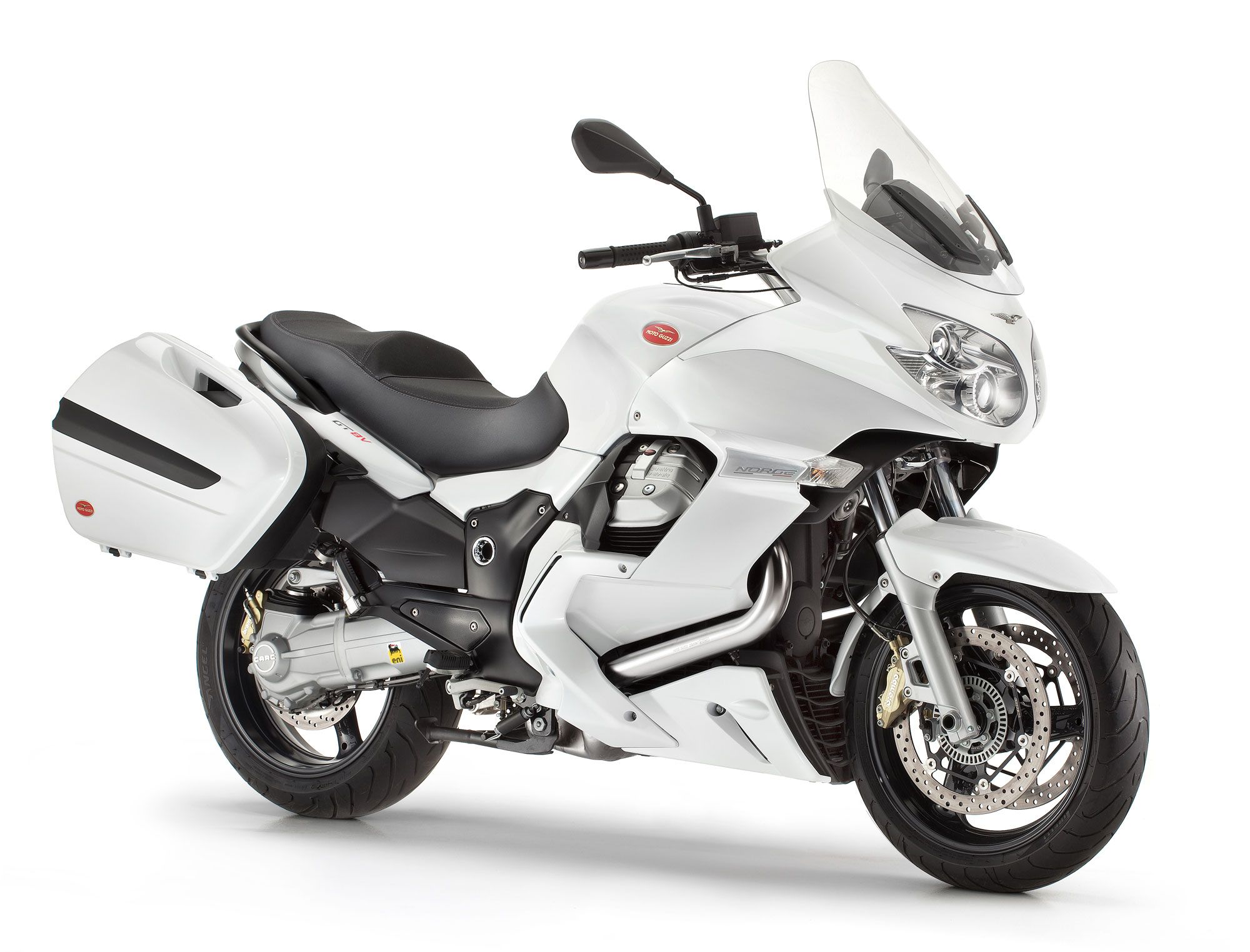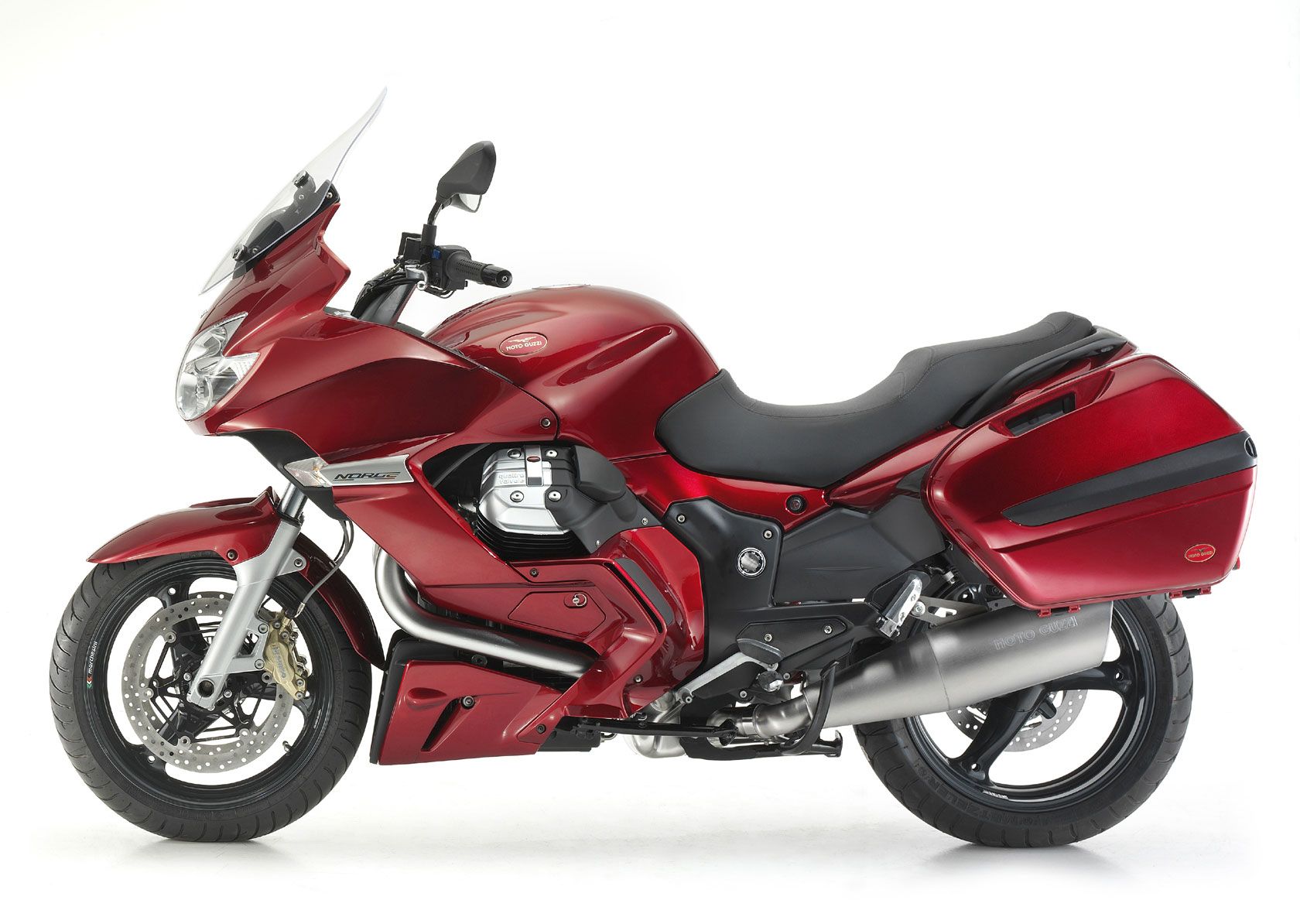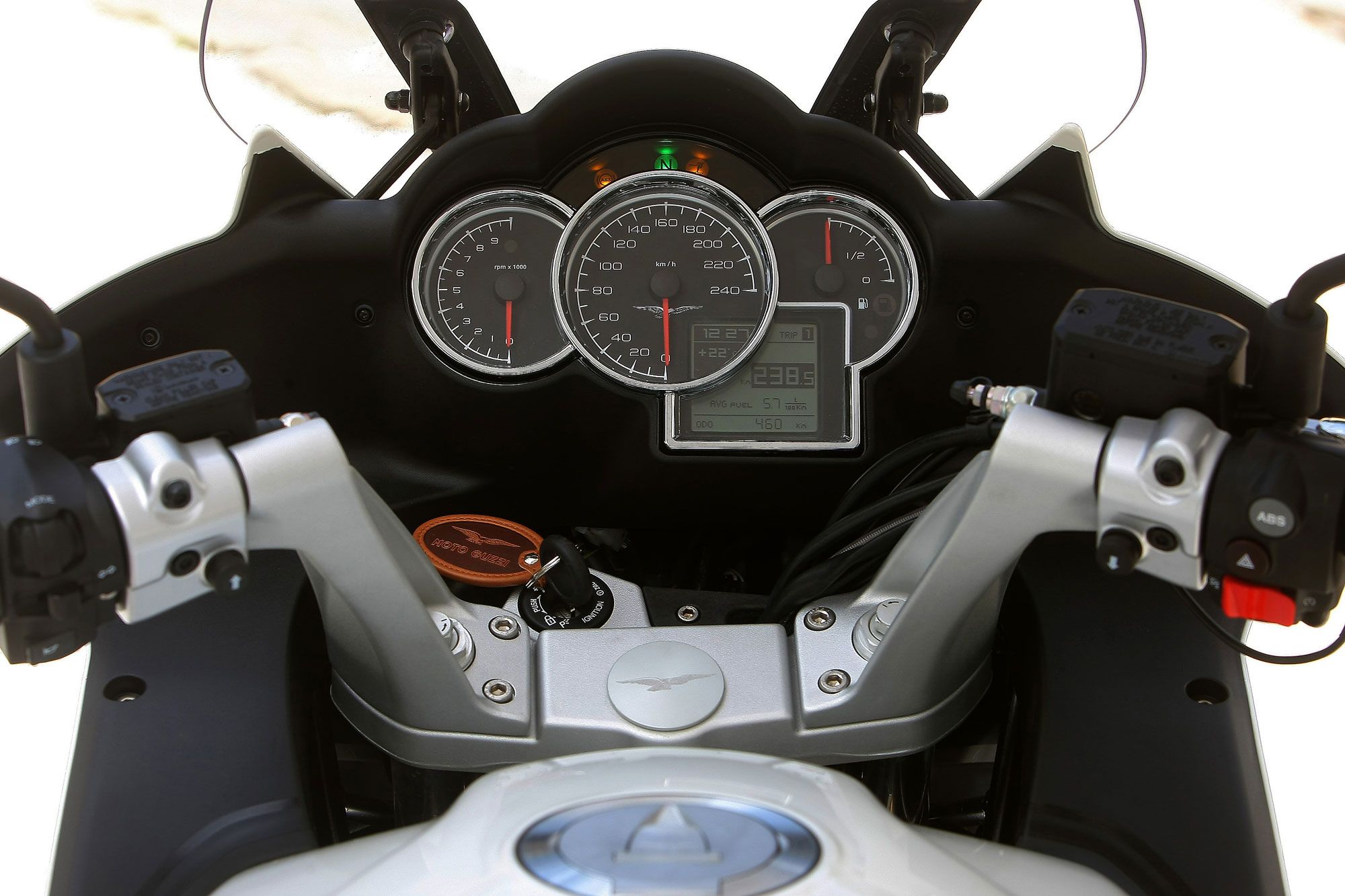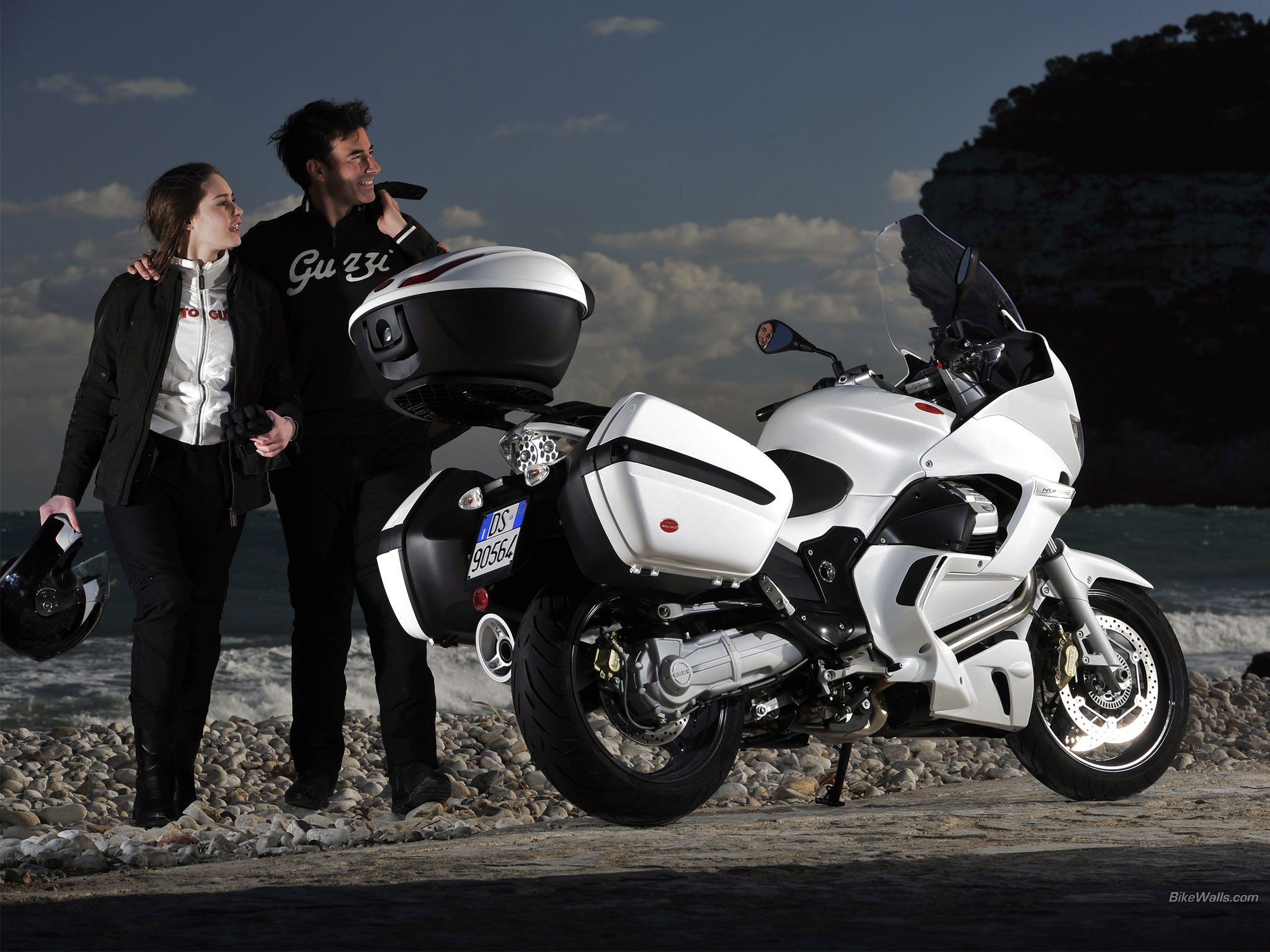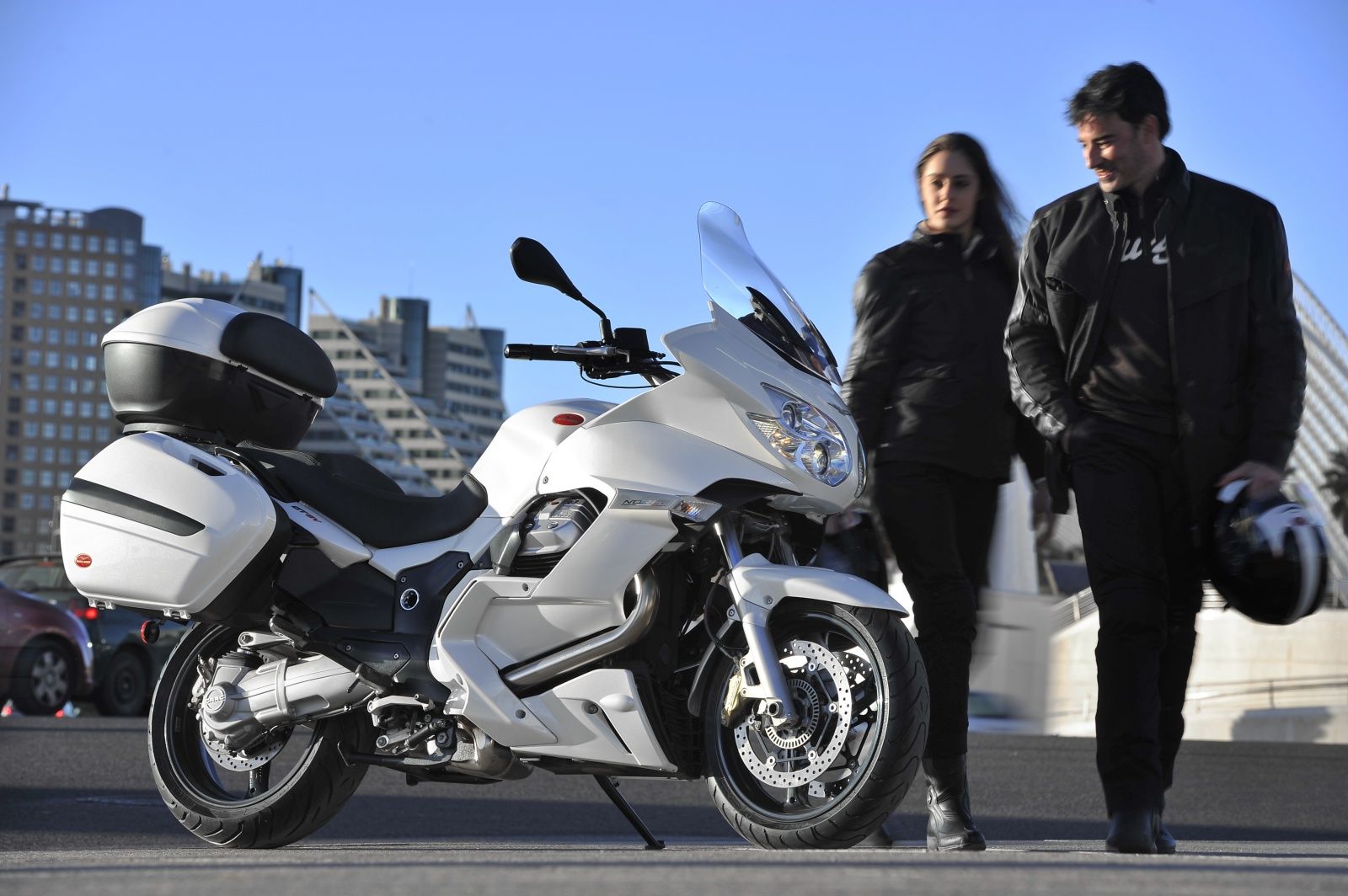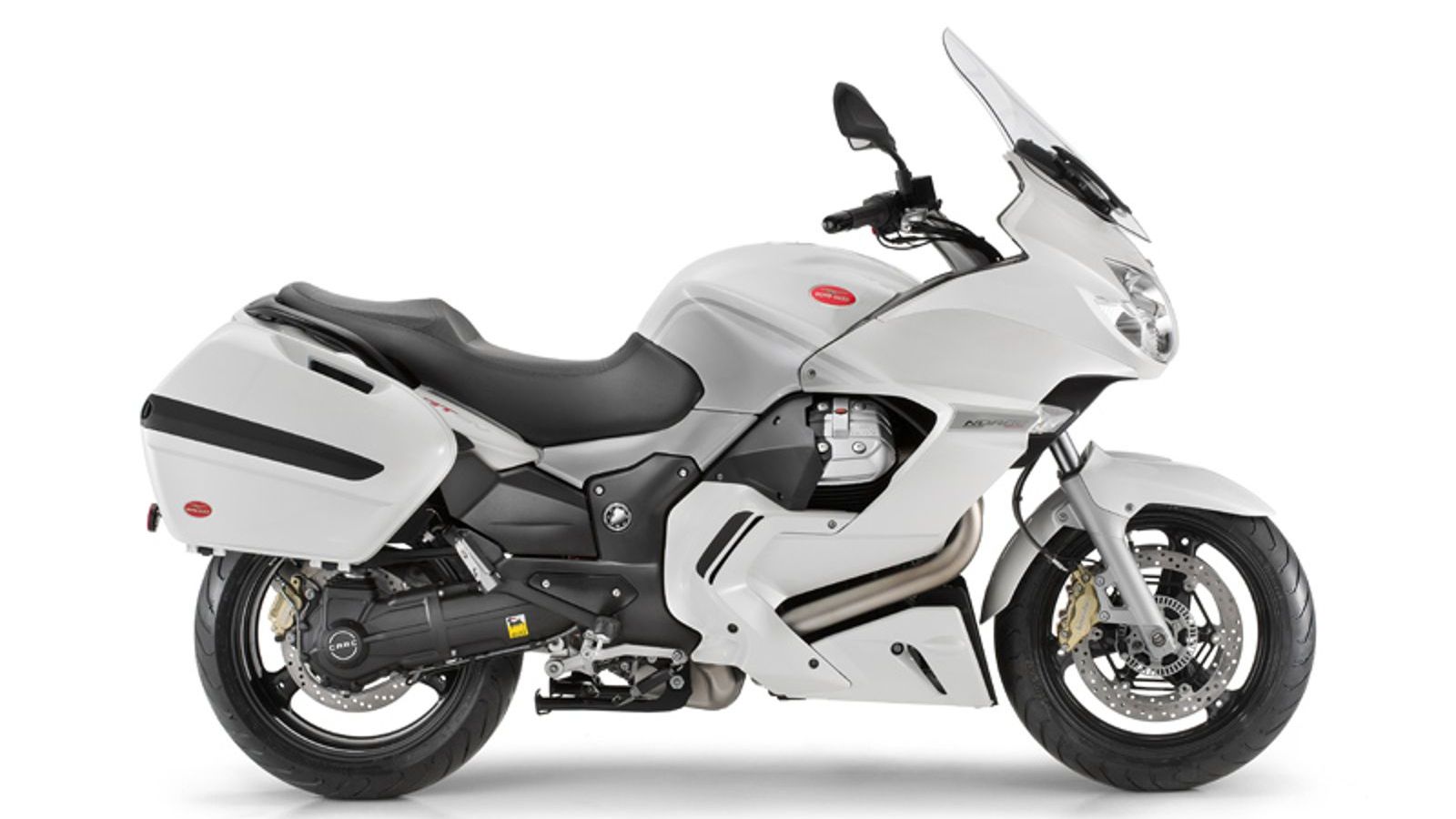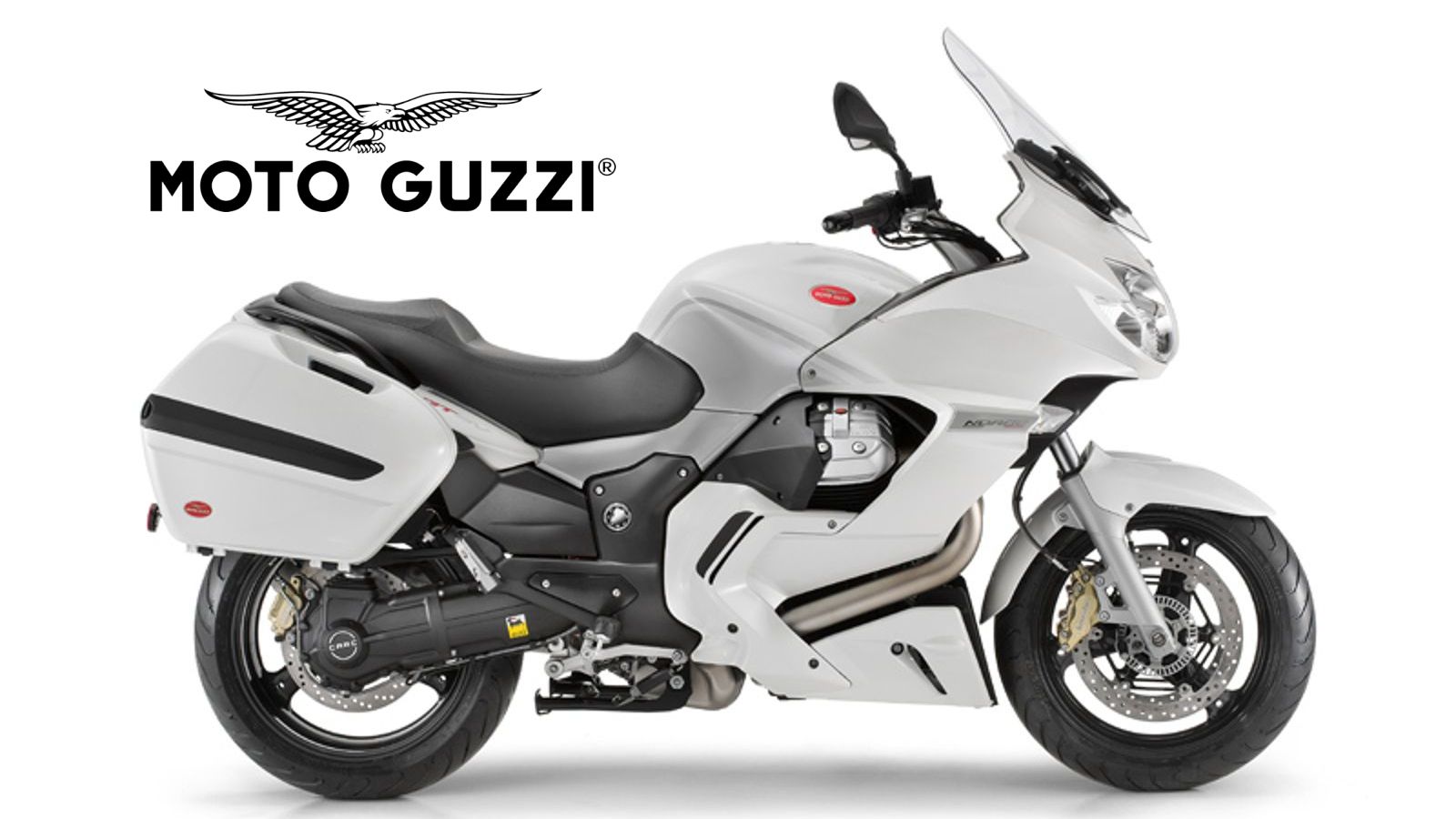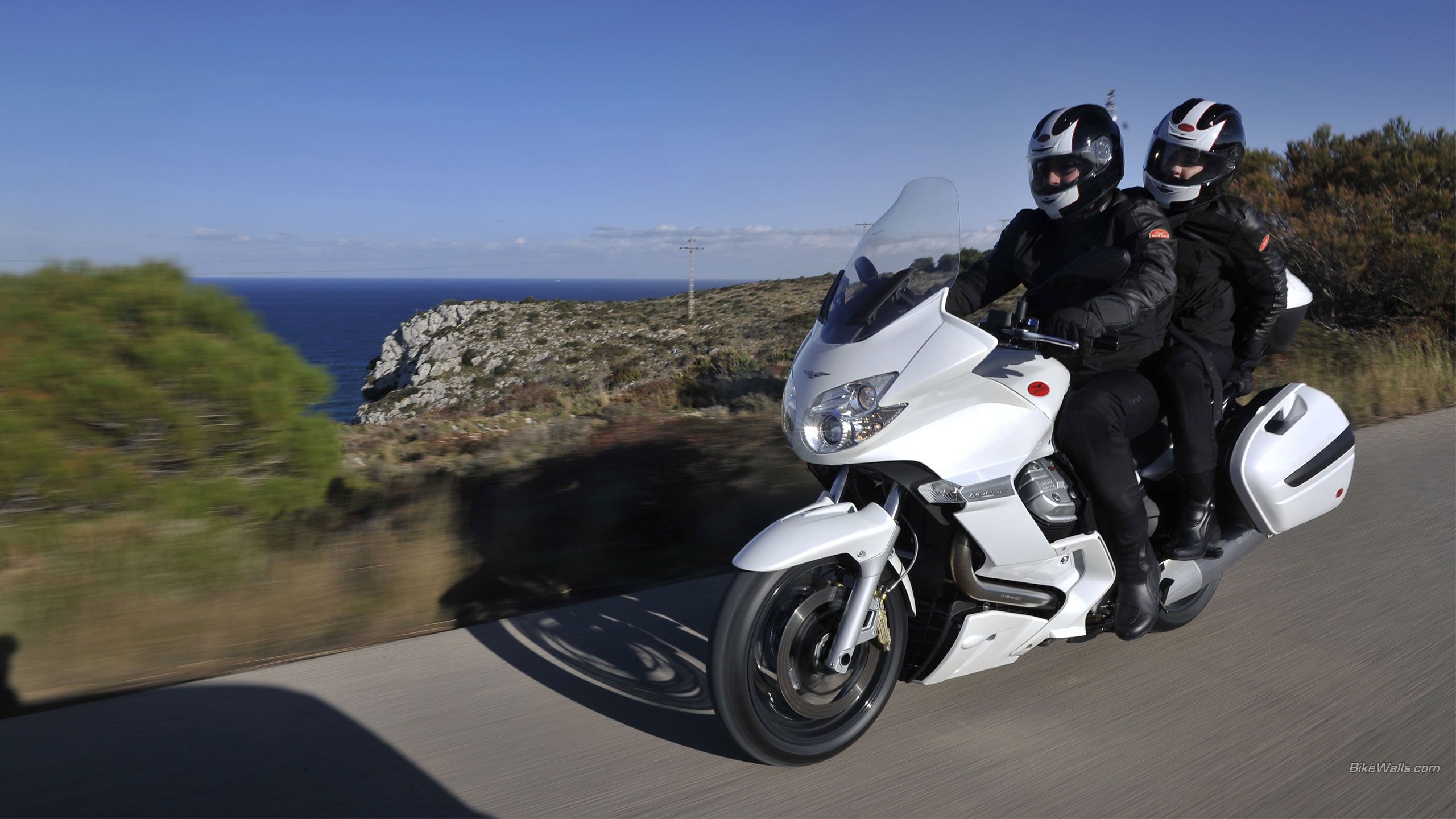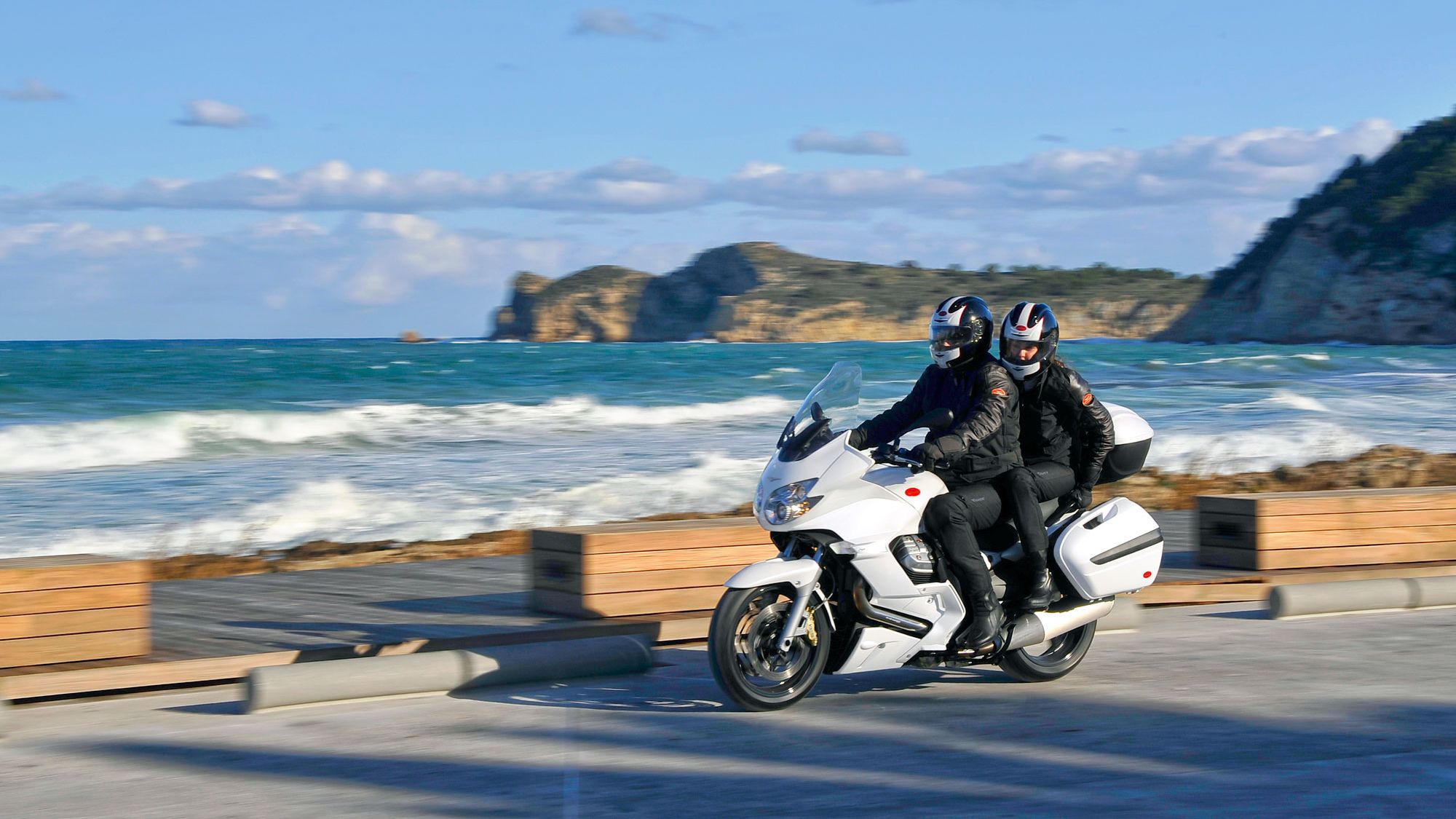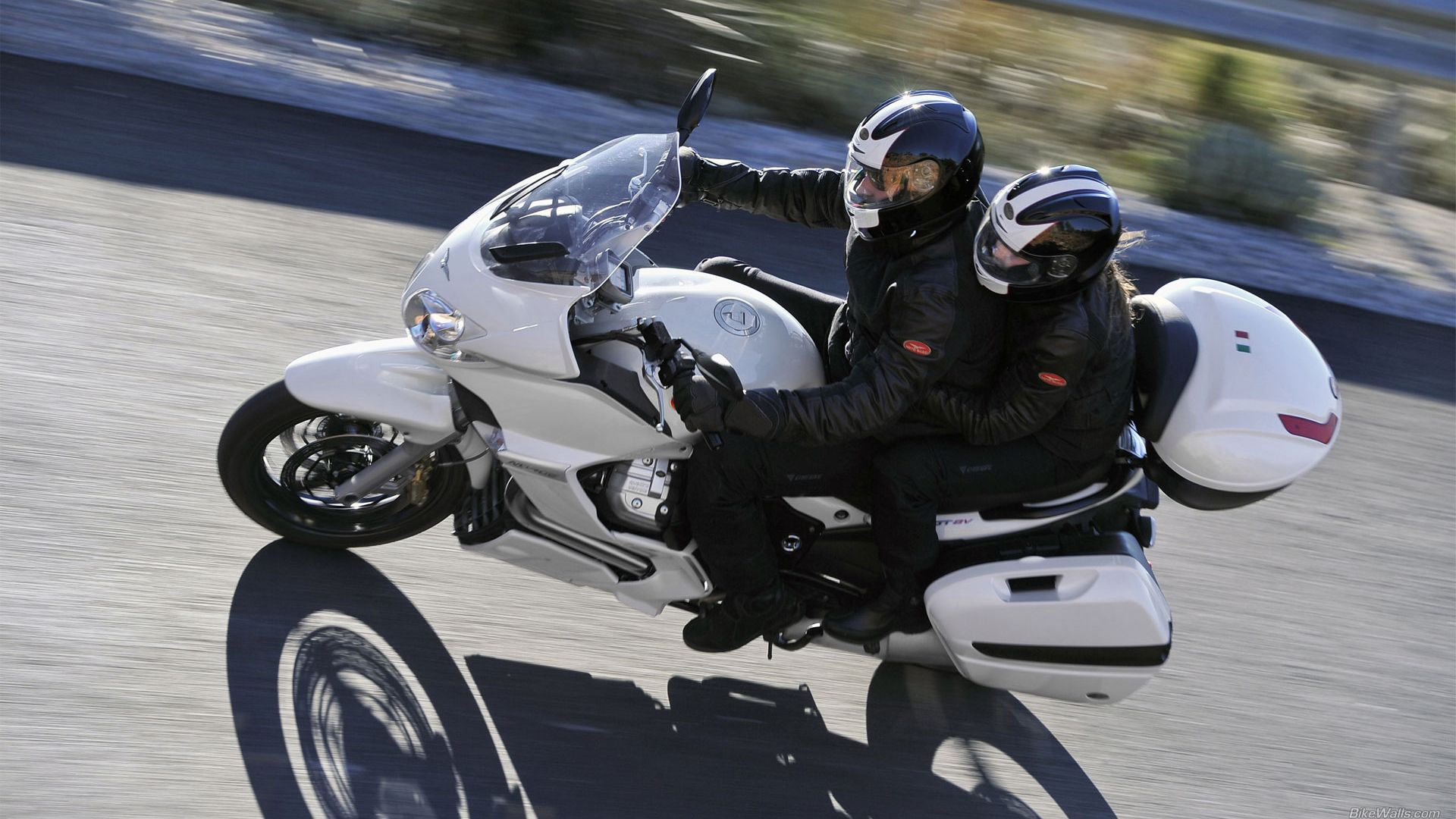Moto Guzzi came up with its latest version of the 1200 GT back in '11, and that design has withstood the test of time as it looks to be a direct carryover into at least the 2018 model year. The factory retains the service of the “four-valve” engine with its 100-plus horsepower and transverse V-twin layout. In keeping with its heritage, the latest Norge falls well within the sport-tour bracket with the protective features and cargo capacity the U.S. market expects of its long-distance bikes. How will it stack up against the American V-twins and the new Gold Wing? We're going to find out, but first let's take a deeper look at the current Norge GT.
Continue reading for my review of the Moto Guzzi Norge 1200 GT.
2013 - 2018 Moto Guzzi Norge 1200 GT 8V
- Make: Array
- Model: 2013 - 2018 Moto Guzzi Norge 1200 GT 8V
- Engine/Motor: 90° V-shaped twin cylinder, four-stroke, air cooled
- [do not use] Vehicle Model: Array
Design
The blunt entry of the front fairing sports a quartet of projectors set within two eye-like recesses to give the Norge an almost predatory visage. Up top, a vented, push button-adjustable windshield provides the rider with protection while relieving the vacuum in the pocket behind the screen to minimize the head-buffet effect.
Cheek fairings connect the upper section to the chin fairing with a cutout to accommodate the exhaust pipes as they sweep their way aft. Another cutout midway up the sides gives us a peek at the rocker covers, and even though the engine still manages to stick out from the rest of the bike just a bit, the fairings go a long way toward mitigating that unusual transverse V-twin look.
Body panels cover the rest of the bike to keep most of the innards a secret to the casual observer, and the net effect is a clean, well thought out bike with far less bulk than you get from a U.S. style machine. The rider's triangle, however, would be familiar to Sportster and Dyna riders because of where the foot controls fall; forward and lower than the jockey position typical of sport-tourers. There's a bit of pullback and rise in the bars, so it places the rider in a rather upright position with a tendency to not want to lean forward too much for too long. In other words, a bit more “tourey” than “sport,” but that's fine if you want to stay in the saddle for long stretches.
'Guzzi thoughtfully shaped the fuel tank with a knee flange on top if you're the type to throw some body English around. The saddle carries just the slightest rise to the P-pad, and though it comes without a passenger's backrest, your human cargo can take comfort in the JC handles that brace the rear end.
Stowage falls to the two side-load panniers, which make it difficult to get the maximum capacity from the boxes, and they aren't very big to begin with. Compare it to an Indian, Victory or Harley-Davidson bagger and the Norge seems to be woefully lacking in overnightability.
Chassis
The chassis got buffed up a bit with a set of 45 mm stems up front that sport an adjustable preload feature that, while fairly basic, put the Norge miles ahead of its domestic competitors. Same with the rear shock that comes with the obligatory preload adjustment plus a rebound-damping adjustment that gives more flexibility than we are accustomed to getting from the homegrown brands.
A pair of 320 mm brake discs and four-pot calipers slow the front wheel with a 282 mm disc and twin-pot anchor out back with ABS coverage all around, whether you want it or not. Cast rims mount 17-inch hoops fore and aft, and the rubbers come with some beef to them with a 120/70 up front and a 180/55 out back; about the same size as nearly every sportbike worth mentioning, but the similar look doesn't necessarily translate into similar handling. The Norge is a bit reluctant in the corners, and not nearly as agile as a straight-up sport, but that's to be expected and is part of the trade off for the touring capabilities. The seat falls out at 31.88 inches off the ground, flatfoot for many and tip-toes for the rest, but not unreasonable for any bike with “sport” anywhere in its genre.
|
Front suspension: |
Hydraulic telescopic fork, Ø 45 mm, preload adjustable |
|
Rear suspension: |
Single arm suspension with progressive linkage, rear shock absorber adjustable in |
|
rebound and pre load adjustment for ergonomic |
|
|
Front brake: |
Double stainless steel floating disc, Ø 320 mm, opposed 4-piston calipers - abs |
|
Rear brake: |
Stainless steel disk, Ø 282 mm, floating caliper with 2 parallel pistons - abs |
|
Tires: |
120/70 ZR17 (F) - 180/55 ZR17 (R) |
Drivetrain
'Guzzi's 1,151 cc “GT 8V” engine gets its name from its pair of four-valve heads. The transverse V-twin layout has long been synonymous with the brand, and as cool as some folks think it is, I gotta' say it worries my nerves to have the delicate and expensive rocker boxes and heads sticking out where they could contact the ground. Just me?
No matter where you land on that, there's no denying the 76.7 pound-feet o' grunt that comes on fully at 5,500 rpm or the 102 ponies that top out at an even 7,000 rpm. The Norge lacks any sort of TC or rider modes whizbangery, but it does have a central control for injection and ignition timing and a thermostat-controlled cooling fan on the oil cooler to give you that extra layer of protection against lubrication breakdown due to high ambient temps and/or slow traffic. Very comforting if your adventures/commutes take you through rush hour somewhere. Power filters through a six-speed transmission with a shaft-type final drive that uses the single-side swingarm as a housing.
|
Engine: |
90 ° V-twin, 4 stroke |
|
Capacity: |
1151 cc |
|
Max power: |
75 kW (100,5 hp) at 7,000 rpm |
|
Max torque: |
104 Nm at 5500 rpm |
|
Exhaust system: |
Stainless steel, with central clearing in 3-way catalytic converter with dual oxygen |
|
sensor (Euro 3) |
|
|
Gear: |
6-speed |
|
Final drive (Shaft): |
Compact Reactive Shaft CA.RC; double universal joint with floating bevel gear, ratio 12/44 = 1: 3.666 |
Pricing
MG lets loose of the Norge 1200 GT for $16,290, which isn't a bad price for a relatively proper tour bike. Too bad the factory was a little uninspired with its color selection. You can get any color you want as long as you want Bianco Madreperla (white).
|
Color: |
Bianco Madreperla |
|
Price: |
$16,290 |
Competitors
The Norge is going to be vying with the likes of Harley-Davidson, Indian and Honda for a slice of the U.S. touring market. Indian baits the table with its Chieftain model that sports a nice front fairing, but then opens right up to leave the rider's legs open to the weather and tops it off with just the suggestion of a windscreen.
Harley is just as bad with the vestigial windshield on its Street Glide, and even the new Gold Wing is more of a boulevard bruiser than its tour-tastic roots would lead you to expect, and its glass comes trimmed down as well, though not quite as heavily pruned as the others.
As far as sporty looks go, I reckon the GL 1800 comes closest even though it's clearly influenced by the American market it is competing within, and trends away from the sport feel of the Norge. All three competitors pack in more stowage capacity, but sport-tourers frequently lack in that area by our standards.
It's the battle of the big-twins, except for the flat-six Honda that actually tops the displacement charts with 1,833 cc, just shy of the 1,811 cc Indian Thunder Stroke 111 with the Norge far, far in last place. That power difference will definitely register on the heinie-dyno, but it also has a heavy influence at the checkout.
The Norge rolls for $16,290 while the cheapest Harley SG fetches $20,999, but only in black at that price. Indian jacks that up to $21,499 and Honda comes off the proudest at $23,500.
He Said
“For the price, it's hard to argue against the Norge...unless you plan on doing some actual touring, that is. The lack of cargo capacity/dry storage is kind of a deal breaker for me, and if you can't use it to tour, then all you have is a commuter/grocery getter, and one that won't carry much beyond the milk and the bread.”
She Said
My wife and fellow motorcycle writer, Allyn Hinton, says, “I might have gone with the new Harley Sport Glide and maybe the Kawasaki Concours as competitors, but there are certainly different ways to look at this. Piaggio threw some R&D money at the Norge back in 2011 and made some much needed improvements. Notably, performance was much better with the new engine. Handling is surprisingly good for a big bike; you feel the weight of it but it transitions well side-to-side. I'm not very tall, so I was tippy-toeing, but once I picked up my feet, it was comfortable. I wonder if taller folks might feel a little cramped.”
Specifications
|
Engine & Drivetrain: |
|
|
Engine: |
90 ° V-twin, 4 stroke |
|
Capacity: |
1151 cc |
|
Max power: |
102 hp at 7,000 rpm |
|
Max torque: |
76.7 lb-ft at 5,500 rpm |
|
Exhaust system: |
Stainless steel, with central clearing in 3-way catalytic converter with dual oxygen |
|
sensor (Euro 3) |
|
|
Gear: |
6-speed |
|
Final drive (Shaft): |
Compact Reactive Shaft CA.RC; double universal joint with floating bevel gear, ratio 12/44 = 1: 3.666 |
|
Chassis: |
|
|
Front suspension: |
Hydraulic telescopic fork, Ø 45 mm, preload adjustable |
|
Rear suspension: |
Single arm suspension with progressive linkage, rear shock absorber adjustable in |
|
rebound and pre load adjustment for ergonomic |
|
|
Front brake: |
Double stainless steel floating disc, Ø 320 mm, opposed 4-piston calipers - abs |
|
Rear brake: |
Stainless steel disk, Ø 282 mm, floating caliper with 2 parallel pistons - abs |
|
Tires: |
120/70 ZR17 (F) - 180/55 ZR17 (R) |
|
Dimensions & Capacities: |
|
|
Max length: |
86.4 inches |
|
Max width: |
34.3 inches |
|
Height: |
44.3 inches |
|
Seat height: |
31.9 inches |
|
Dry weight: |
562.2 pounds |
|
Fuel tank capacity : |
23 litres (4 litre reserve) |
|
Details: |
|
|
Color: |
Bianco Madreperla |
|
Price: |
$16,290 |
References
Indian Motorcycle Chieftain
See our review of the Indian Motorcycle Chieftain.
Harley-Davidson Street Glide
See our review of the Harley-Davidson Street Glide.
Honda GoldWing
See our review of the Honda GoldWing.


